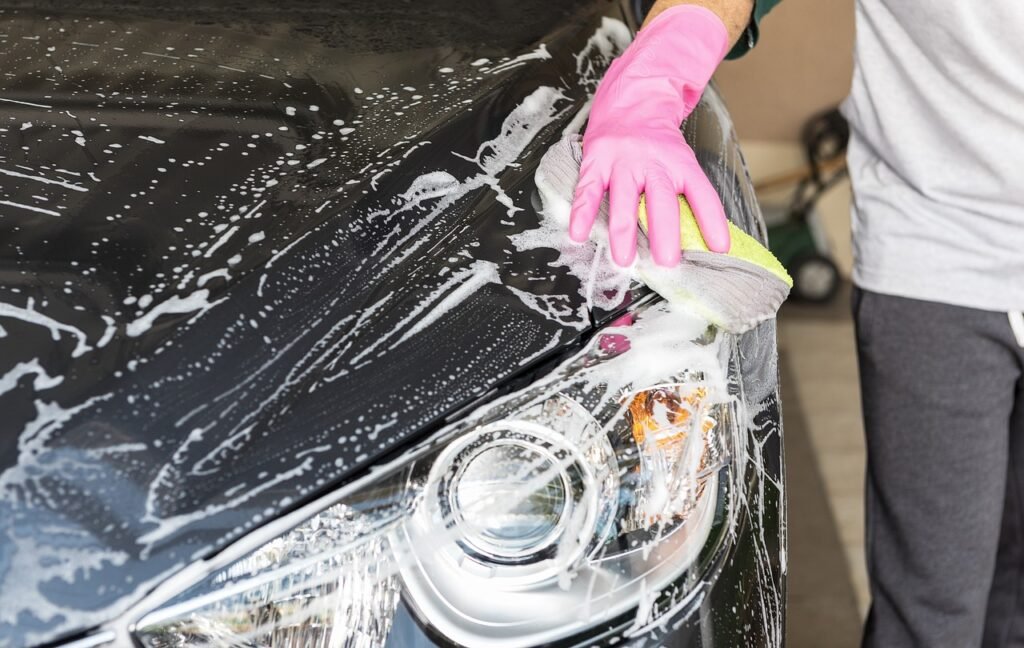Step-by-Step Hand Wash Car Guide

Car enthusiasts understand the significance of maintaining a vehicle’s pristine appearance and maximizing its resale value. In this pursuit, mastering the art of hand washing your car emerges as a fundamental skill. Unlike automated washes with potentially abrasive brushes, hand washing offers a personalized and meticulous cleaning experience.
The Significance of Hand Washing
Claim 1: Drive-thru car washes can scratch your paint with harsh bristles. (True)
Claim 2: Detailing places can do a subpar job. (Subjective) It depends on the detailer’s attention to detail.
Claim 3: Hand washing prevents paint damage and increases resale value. (True) Regular hand washing preserves the car’s aesthetic appeal, potentially boosting its resale value.
Essential Products and Tools for a Professional Hand Wash at Home
Embark on the journey of a DIY car wash with the right tools and products. Here are key recommendations to guide you:
Car Wash Soap:
- Recommended: Chemical Guys Extreme Bodywash & Wax Foaming Car Wash Soap
- Alternative: Fortador Blue Magic Car Wash Soap
- DIY option: Dish soap diluted in water
Glass Cleaner:
- Recommended: Sprayway Glass Cleaner Aerosol Spray
- Automotive choice: Fortador 50 to 1 Polimer Glass Cleaner
Microfiber Towels:
Use car wash-specific microfiber towels to avoid scratches.
Two Buckets:
One for soapy water, another for clean water.
Steam Cleaner (Optional):
For efficient cleaning without chemicals, consider the recommended Fortador Volt Mini.
Additional Supplies:
- Pressure washer
- Vacuum or leaf blower
- Hose
- Wax
- Stiff brush/wheel brush
- Optional headlight restoration kit
The Hand Washing Process: A Detailed Step-by-Step Guide
Determining Washing Frequency:
- Muddy/rainy conditions: Wash weekly to prevent mud and salt damage.
- Less messy conditions: Washing every two weeks may suffice.
Precautions:
- Remove jewelry to prevent scratches.
- Wear clothes without metal parts.
- Park away from direct sunlight.
- Wear gloves to protect your skin.
Step-by-Step Guide:
1. Rinse: Blast away loose dirt with a hose or pressure washer, ensuring to cover the tires.
2. Wheels and Tires: Start with the dirtiest parts. Use a wheel brush for barrels, wells, cracks, and the backs of the wheels.
3. Exterior Wash: Utilize a microfiber wash mitt and soapy water, working from top to bottom in side-to-side motions to avoid streaks.
4. Rinse Again: Remove soapy water and dirt thoroughly. Inspect for missed spots and address them with a microfiber towel.
5. Wash Windows: Use an ammonia-free glass cleaner and a clean microfiber towel for streak-free windows.
6. Final Rinse: Ensure no soap or cleaning solution remains to prevent water marks.
7. Door Sills and Jambs: Use a damp microfiber towel for these often-missed areas.
8. Clean the Interior: Vacuum, use an interior spray, or diluted dish soap, and wipe with clean microfiber towels. Employ a foam brush/paintbrush for air vents.
9. Dry Your Car: Use the two-towel method for efficient drying. Allow the interior to air dry.
10. Protection (Optional): Apply wax for enhanced shine and easier future washing.
Hand washing transcends being a mere chore; it evolves into a skill that protects your car’s value and ensures a lasting beauty. While automated washes may offer convenience, hand washing’s potential for a flawless finish makes it the truly rewarding choice. Invest a few hours, gather the right tools, and transform yourself into a skilled car detailer, preserving your vehicle’s cleanliness and attractiveness with each meticulous wash.





